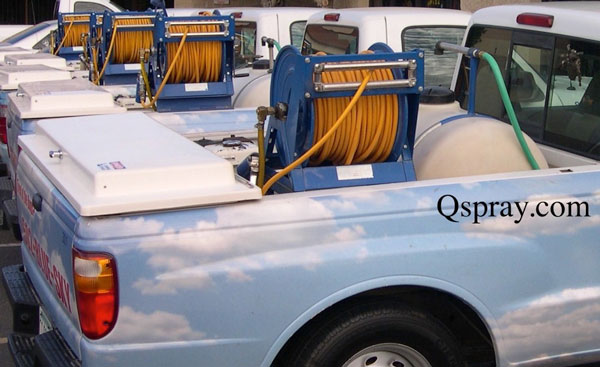Pest Control Equipment Standardization – The Best Strategy
Posted by Andrew Greess on Jan 22, 2017
Have you noticed that year after year, Southwest Airlines makes money? They make money in up economies and down economies. They make money when all their competitors are losing their shirts.
How does Southwest Airlines do it?
There are a number of reasons for their success, including great management & culture and the use of a point-to-point system of flight scheduling (rather than the more complex hub-and-spoke system used by most major airlines). There is another reason they always excel and it is the subject of our discussion today: Equipment Standardization.
Southwest Airlines flies only one type of aircraft: the Boeing 737.
This creates huge efficiencies.
Training – All staff only needs to be trained on one aircraft. This applies to pilots, cabin staff, ground staff, baggage handlers, mechanics, accountants, marketing managers, telephone service and maintenance staff.
Scheduling – All staff can work on any aircraft. For example, if a pilot is sick, any other pilot can stand in and do the job without additional training or instruction. This reduces the odds of having to cancel a flight when the appropriate staff is not available. Further, any Southwest plane can taxi up to any airport, terminal or gate to which Southwest flies.
Efficiency – Every employee knows exactly where everything is and how to do their job, no matter which plane or flight they are working, supporting or servicing.
Maintenance – Mechanics only need to be trained to service one plane. The capital (cash) tied up in parts inventories is much lower because there are so many fewer required parts. This also significantly improves the odds that a needed part will be available to solve a problem. This in turn reduces the downtime that the planes are on the ground, not producing revenue. In the extreme, the number of backup aircraft that Southwest must keep available is probably lower than their competitors who fly multiple types of aircraft.
I
believe many of these concepts also apply to Pest Control companies. Standardizing your
pest
control equipment
will result in many of the same efficiencies for your
company.

Some ideas to get you started:
1.If your pest equipment is already standardized, congratulations. You are clearly in the minority. Take the next step and standardize storage locations on the vehicles. For example, glue boards are always stored in location X. We service companies with large fleets and even when the equipment is standardized, there are significant variations among trucks as techs keep their tools and materials in different places.
2.It obviously doesn’t make sense to replace all your existing pest control equipment with new, standardized equipment. Start small with key components that can have a big impact.
Line Strainer/Filter. As you have heard me rant repeatedly, filters are the source of many problems. Start here. Standardize filters so that all techs know how to check and change them and so it is easy and cheap to inventory the screens and gaskets that cause so many problems.
Quick Disconnects. Standardize quick disconnects and spray tools across trucks so that spray guns are interchangeable and a leaking gun does not disrupt schedules.
3. Develop Equipment Standards. Make sure you have clear standards for hand sprayers, backpack sprayers, tool boxes, pest control spray rigs , etc. so that over time, as you replace obsolete equipment, your fleet becomes standardized.
3.Common Sense Required. You may not be able to standardize everything. If you have special purpose vehicles, standardize where you can. For example, if you have a larger vehicle for termite treatments, you can still work with your equipment vendor to standardize filtration (location, access, design), maintenance (engine positioned so that oil changes are easy), etc.
Start today by examining your pest equipment to find opportunities. Even a little standardization can go a long way toward improved service and profitability.


